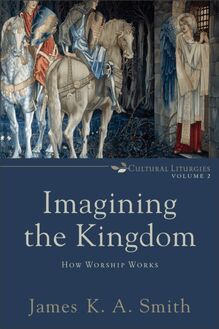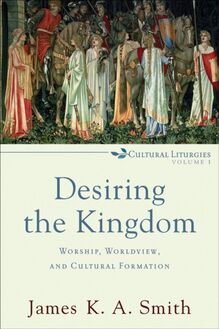-
 Univers
Univers
-
 Ebooks
Ebooks
-
 Livres audio
Livres audio
-
 Presse
Presse
-
 Podcasts
Podcasts
-
 BD
BD
-
 Documents
Documents
-
- Cours
- Révisions
- Ressources pédagogiques
- Sciences de l’éducation
- Manuels scolaires
- Langues
- Travaux de classe
- Annales de BEP
- Etudes supérieures
- Maternelle et primaire
- Fiches de lecture
- Orientation scolaire
- Méthodologie
- Corrigés de devoir
- Annales d’examens et concours
- Annales du bac
- Annales du brevet
- Rapports de stage
La lecture à portée de main
Vous pourrez modifier la taille du texte de cet ouvrage
Découvre YouScribe en t'inscrivant gratuitement
Je m'inscrisDécouvre YouScribe en t'inscrivant gratuitement
Je m'inscrisEn savoir plus
Vous pourrez modifier la taille du texte de cet ouvrage
En savoir plus

Description
Sujets
Informations
| Publié par | Baker Publishing Group |
| Date de parution | 01 août 2009 |
| Nombre de lectures | 0 |
| EAN13 | 9781441211262 |
| Langue | English |
| Poids de l'ouvrage | 3 Mo |
Informations légales : prix de location à la page 0,0662€. Cette information est donnée uniquement à titre indicatif conformément à la législation en vigueur.
Extrait
© 2009 by James K. A. Smith
Published by Baker Academic
a division of Baker Publishing Group
P.O. Box 6287, Grand Rapids, MI 49516-6287
www.bakeracademic.com
Ebook edition created 2013
Ebook corrections 09.07.2017
All rights reserved. No part of this publication may be reproduced, stored in a retrieval system, or transmitted in any form or by any means—for example, electronic, photocopy, recording—without the prior writte n permission of the publisher. The only exception is brief quotations in printed reviews.
ISBN 978-1-4412-1126-2
Library of Congress Cataloging-in-Publication Data is on file at the Library of Congress, Washington, DC.
Unless otherwise indicated, Scripture quotations are from the New Revised Standard Version of the Bible, copyright © 1989, by the Division of Christian Education of the National Council of the Churches of Christ in the United States of America. Used by permission. All rights reserved.
Scripture quotations labeled NIV are from the HOLY BIBLE, NEW INTERNATIONAL VERSION®. NIV®. Copyright © 1973, 1978, 1984 by International Bible Society. Used by permission of Zondervan. All rights reserved.
Scripture quotations labeled KJV are from the King James Version of the Bible.
The internet addresses, email addresses, and phone numbers in this book are accurate at the time of publication. They are provided as a resource. Baker Publishing Group does not endorse them or vouch for their content or permanence.
For Madison:
That little glint in your eye is,
for me,
a sure sign that the kingdom
is a kingdom of love.
Delight yourself in the L ORD ,
and he will give you the desires of your heart.
Psalm 37:4 NIV
Reason : I, Reason, am in minds as the power of looking is in the eyes. Having eyes is not the same thing as looking, and looking is not the same as seeing. The soul therefore needs three things: eyes which it can use aright, looking, and seeing. It is impossible to show God to a mind vitiated and sick. Only the healthy mind can see him. But if the mind does not believe that only thus will it attain vision, it will not seek healing. Even if it believes that this is true, and that only so will it attain the vision, but at the same time despairs of healing, will it not abandon the quest and refuse to obey the precepts of the physician?
Augustine : Most assuredly, especially because the disease must have sharp remedies.
Reason : So to faith must be added hope. [But] suppose it believes all this is true and hopes that healing is possible, but does not love and desire the promised light, and thinks it must be meantime content with its darkness which through habit has become pleasant, will it not, no less, spurn the physician?
Augustine : Perfectly true.
Reason : Therefore a third thing is necessary, love .
Augustine, Soliloquies 1.6.12
The boy sat tottering. The man watched him that he not topple into the flames. He kicked holes in the sand for the boy’s hips and shoulders where he would sleep and he sat holding him while he tousled his hair before the fire to dry it. All of this like some ancient anointing. So be it. Evoke the forms. Where you’ve nothing else construct ceremonies out of the air and breathe upon them.
Cormac McCarthy, The Road
Contents
Cover
Title Page
Copyright Page
Dedication
Epigraphs
List of Sidebars and Figures
Preface
Acknowledgments
Introduction: Beyond “Perspectives”: Faith and Learning Take Practice
Making the Familiar Strange: A Phenomenology of Cultural Liturgies
The End of Christian Education: From Worldview to Worship (and Back Again)
Elements of a Theology of Culture: Pedagogy, Liturgy, and the Church
Part 1: Desiring, Imaginative Animals: We Are What We Love
1. Homo Liturgicus : The Human Person as Lover
From Thinking Things to Liturgical Animals
From Worldviews to Social Imaginaries
From Spheres to Aims: Liturgical Institutions
2. Love Takes Practice: Liturgy, Formation, and Counter-formation
Thick and Thin Practices: Ritual Forces of Cultural Formation
Formation, Mis -formation, and Counter -formation: Liturgies Secular and Christian
3. Lovers in a Dangerous Time: Cultural Exegesis of “Secular” Liturgies
“Reading” Culture through the Lens of Worship
Consuming Transcendence: Worship at the Mall
Sacrificial Violence: The “Military-Entertainment Complex”
Excursus: On Patriotism
Cathedrals of Learning: Liturgies of the University
Apologetic Excursus: The Persisting Witness of Idolatry
Part 2: Desiring the Kingdom: The Practiced Shape of the Christian Life
4. From Worship to Worldview: Christian Worship and the Formation of Desire
The Primacy of Worship to Worldview
The Sacramental Imagination: Resisting Naturalism and Supernaturalism
Excursus: The Shape of Christian Worship
5. Practicing (for) the Kingdom: An Exegesis of the Social Imaginary Embedded in Christian Worship
Liturgical Time: Rhythms and Cadences of Hope
Call to Worship: An Invitation to Be Human
God’s Greeting and Mutual Greetings: Hospitality, Community, and Graced Dependence
Song: Hymning the Language of the Kingdom
The Law: Order, Norms, and Freedom for the Good
Confession and Assurance of Pardon: Brokenness, Grace, Hope
Baptism: Initiation into a Royal Priesthood, Constitution of a New People
The Creed: Situating Belief
Prayer: Learning the Language of the Kingdom
Scripture and Sermon: Renarrating the World
Eucharist: Supper with the King
Offering: Kingdom Economics of Gratitude
Sending as Witnesses: The Cultural Mandate Meets the Great Commission
Worship, Discipleship, and Discipline: Practices beyond Sunday
6. A Christian University Is for Lovers: The Education of Desire
A New Monasticism for the University: Why Christian Colleges Should Corrupt the Youth
Christian Education Takes Practice: Three “Monastic” Opportunities
Christian Worship as Faculty Development: From Christian Scholars to Ecclesial Scholars
Name Index
Subject Index
Notes
Back Cover
Sidebars and Figures
Sidebars
Picturing This
Picturing Education as Formation in Orwell’s Road to Wigan Pier
Why Victoria’s In on the Secret: Picturing Discipleship at The Moulin Rouge
Marketing (as) Evangelism: Picturing the Liturgy of Consumerism in “The Persuaders”
Picturing the University’s Liturgies in Wolfe’s I Am Charlotte Simmons
Picturing Resistance in 1984
Picturing the Sacramental Imagination in Graham Greene and Anne Sexton
To Think About
The Shape of Christian Education
Nabokov on Reading with Our Spines
A Practices Audit
The “Doc Ock” Challenge
Competing Allegiances
Sacramentality and Stuff in Percy’s Love in the Ruins
Confession as Liberation
Contemporary, Concrete Renunciations
Singing the End of Strangers
Figures
Homo Liturgicus : The Human as Desiring Animal
Shifting the Center of Gravity of the Self: From Cognitive to Affective
From Worldview to Social Imaginary
Rituals, Practices, and Liturgies
Preface
This book has a primary target, but it’s also hoping for some collateral impact. The genesis of the project was a desire to communicate to students (and faculty) a vision of what authentic, integral Christian learning looks like, emphasizing how learning is connected to worship and how, together, these constitute practices of formation and discipleship. Instead of focusing on what Christians think , distilling Christian faith into an intellectual summary formula (a “worldview”), this book focuses on what Christians do , articulating the shape of a Christian “social imaginary” as it is embedded in the practices of Christian worship. (Alexander Schmemann’s For the Life of the World was an inspiring, working model here—though I don’t pretend to have approached the compact majesty of that marvelous little book.) In short, the goal is to push down through worldview to worship as the matrix from which a Christian worldview is born—and to consider what that means for the task of Christian education and the shape of Christian worship. This doesn’t require rejecting worldview-talk, only situating it in relation to Christian practices, particularly the practices of Christian worship. Thus I envision the book as a companion volume to classroom texts on worldview such as Walsh and Middleton’s Transforming Vision , Wolters’s Creation Regained , or Plantinga’s Engaging God’s World .
As I was working on the project over the past several years and had opportunity to field-test the ideas in various contexts, it was suggested to me that the book’s argument might be of interest to a couple of further audiences. First, because it articulates the formative importance of worship and the vision of the world implicit in the practices of Christian worship, the book may be of interest to pastors, campus ministers, worship leaders, and others responsible for the shape of Christian worship in local congregations. It would be an honor and pleasure for me if this book could be a catalyst for inviting evangelical and Reformed communities to further intentional reflection on what we do as a people gathered by worship. Second, fellow scholars who heard or read early drafts of the project suggested that some of the issues and themes engaged here might also be breaking new ground and striking some new paths for Christian thought, and so might be of interest to scholars (philosophers, theologians, social scientists, and others). However, I didn’t want to abandon the pedagogical intentions of the project and write a scholarly book. So scholars might read this volume as a précis or abstract of a larger project—a bit of a promissory note.
I hope to keep those promises in two follow-up monographs that will constitute volumes 2 and 3 of Cultural Liturgies. The second volume will specifically focus on the philosophical anthropology sketched in chapters 1 and 2, with particular attention to the emerging dialogue between phenomenology, cognitiv
-
 Univers
Univers
-
 Ebooks
Ebooks
-
 Livres audio
Livres audio
-
 Presse
Presse
-
 Podcasts
Podcasts
-
 BD
BD
-
 Documents
Documents
-
Jeunesse
-
Littérature
-
Ressources professionnelles
-
Santé et bien-être
-
Savoirs
-
Education
-
Loisirs et hobbies
-
Art, musique et cinéma
-
Actualité et débat de société
-
Jeunesse
-
Littérature
-
Ressources professionnelles
-
Santé et bien-être
-
Savoirs
-
Education
-
Loisirs et hobbies
-
Art, musique et cinéma
-
Actualité et débat de société
-
Actualités
-
Lifestyle
-
Presse jeunesse
-
Presse professionnelle
-
Pratique
-
Presse sportive
-
Presse internationale
-
Culture & Médias
-
Action et Aventures
-
Science-fiction et Fantasy
-
Société
-
Jeunesse
-
Littérature
-
Ressources professionnelles
-
Santé et bien-être
-
Savoirs
-
Education
-
Loisirs et hobbies
-
Art, musique et cinéma
-
Actualité et débat de société
- Cours
- Révisions
- Ressources pédagogiques
- Sciences de l’éducation
- Manuels scolaires
- Langues
- Travaux de classe
- Annales de BEP
- Etudes supérieures
- Maternelle et primaire
- Fiches de lecture
- Orientation scolaire
- Méthodologie
- Corrigés de devoir
- Annales d’examens et concours
- Annales du bac
- Annales du brevet
- Rapports de stage








